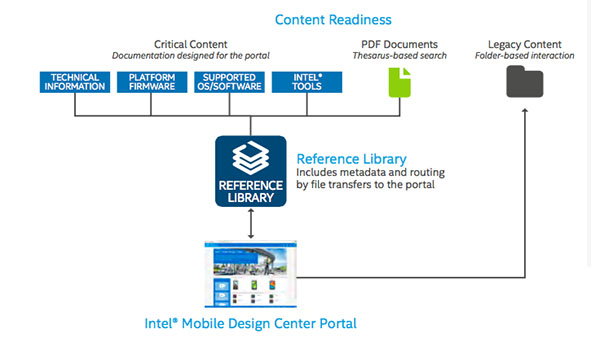IT Best Practices: Optimizing Mobile-Device Design with Targeted Content

IT Best Practices: To help Intel IT’s mobile-device-design customers find the documentation they need, Intel has created a new content repository that simplifies the search process. Until recently, customers who design mobile devices often experienced difficulty locating Intel design information because the content was housed in multiple locations, often in long-form documents—up to 20,000 pages each. Locating information for client projects often required the help of multiple Intel engineers.
Intel IT designed the Intel Mobile Design Center portal to achieve the following goals:
• Provide best-in-class content-delivery methods.
• Provide flexible, dynamic web-based delivery and notification tools.
• Improve the overall customer experience.
• Require fewer Intel resources to support customer projects.
• Increase the number of solutions designed.
• Reduce time to market.
To realize these goals, we worked with the business to separate content development from content presentation (appearance). The business group responsible for mobile-design documentation created topic-based chunks of highly specific information using Darwin Information Typing Architecture (DITA) XML-based content authoring for critical information. The new content-delivery approach required us to develop key components for managing and publishing the content, including a reference library and a content pipeline.
Mobile-design customers can now assemble important information quickly by using the topic-based search engine, filtering for topics of interest. The new Intel Mobile Design Center portal has increased the number of mobile solutions Intel customers take to market and has decreased time to market for those solutions. It lays the foundation for process and content improvements across the enterprise.
For more information on Intel IT Best Practices, please visit intel.com/IT
Posted in:
Information Technology, Intel, Intel IT, IT White Papers, IT@Intel

